Author: Marshall Schott
Back when I was attending Western Washington University in Bellingham, WA, a craft beer more astute young imbibers would bring to parties was Pete’s Wicked Strawberry Blonde Ale. While this was a time in my life where I preferred to tap the Rockies, I was never one to turn down a free beer and consumed plenty of this stuff, the flavor of which was reminiscent of the strawberry hard candy my grandma kept in a bowl on her end table.
As I got deeper into the world of beer and started brewing my own, I tended to shy away from fruited beer, for no other reason than the fact I loved the classics. A couple years after I got married and moved to California, a friend of mine shared a beer with me that he made with berry puree, and I thought it was pretty damn tasty. It was fairly soon after this that I began to notice an increase in commercial beers featuring fruits, some of which I was surprised to discover I rather enjoyed. The BJCP provides the following description for Fruit Beer:
A harmonious marriage of fruit and beer, but still recognizable as a beer. The fruit character should be evident but in balance with the beer, not so forward as to suggest an artificial product.
Indeed, the fruited beers I found I liked most were those where the fruit didn’t necessarily steal the show, but rather contributed a touch of something unique. Having recently received a can of Oregon Fruit Products blueberry puree, I was keen to see how it’d work in a simple American Wheat Beer and figured I’d cut a few corners while brewing it as well.
| BREWING THE BEER |
The recipe for this batch was very similar to my recent Short & Shoddy American Wheat Beer recipe, though I used a different yeast strain and added a can of blueberry puree.
Short & Shoddy Blueberry Wheat Ale
Recipe Details
| Batch Size | Boil Time | IBU | SRM | Est. OG | Est. FG | ABV |
|---|---|---|---|---|---|---|
| 5.5 gal | 30 min | 22.4 | 4.7 SRM | 1.049 | 1.006 | 5.64 % |
| Actuals | 1.049 | 1.006 | 5.64 % | |||
Fermentables
| Name | Amount | % |
|---|---|---|
| Pelton: Pilsner-style Barley Malt | 5 lbs | 38.28 |
| Shaniko: White Wheat Malt | 5 lbs | 38.28 |
| Blueberry (Fruit) | 3.062 lbs | 23.44 |
Hops
| Name | Amount | Time | Use | Form | Alpha % |
|---|---|---|---|---|---|
| Mosaic LUPOMAX | 10 g | 30 min | Boil | Pellet | 17.5 |
| Mosaic LUPOMAX | 7 g | 15 min | Boil | Pellet | 17.5 |
Yeast
| Name | Lab | Attenuation | Temperature |
|---|---|---|---|
| Global (L13) | Imperial Yeast | 77% | 32°F - 32°F |
Notes
| Water Profile: Filtered Fresno tap water with unmeasured amounts of gypsum and CaCl |
Download
| Download this recipe's BeerXML file |
I began collecting the full volume of filtered water at 7:13 AM
Aiming for a more balanced water profile, I added unmeasured amounts of both gypsum and calcium chloride to the water.
As the water was heating up, I weighed out and milled the grain.
When the water was properly heated, I stirred in the grist then checked to make sure it was at my target mash temperature.
Hoping to improve efficiency a bit, I gave the mash a good stir every time I walked by it.
Once the 30 minute mash rest was complete, I removed the grains and let them drip into the kettle while the wort was heating up.
I then prepared the kettle hop additions.
The wort was boiled for just 30 minutes with hops added at the times stated in the recipe.
At the completion of the boil, I quickly chilled the wort with my IC.
A refractometer reading showed the non-fruited wort was at 1.044 OG, for a brewhouse efficiency of 64%.
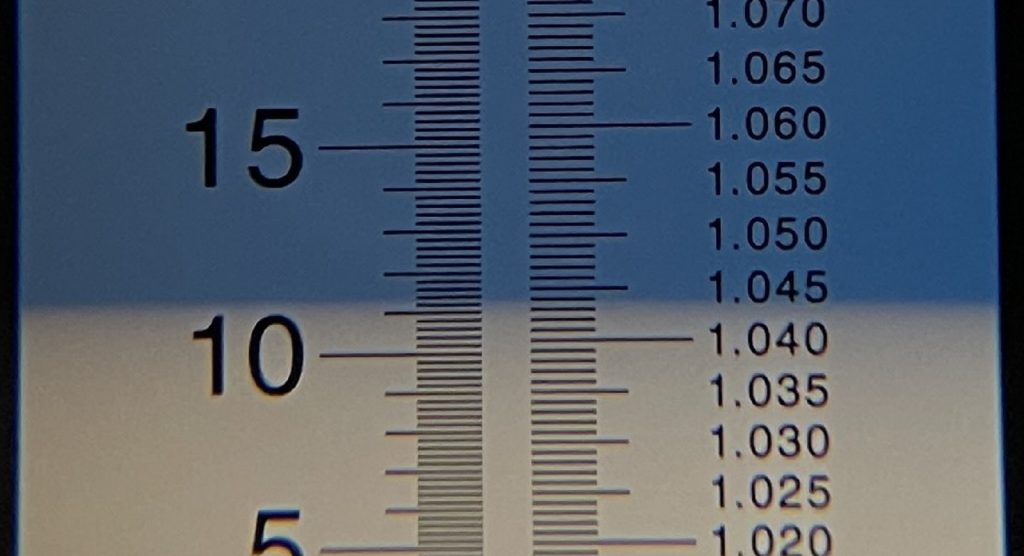
At this point, I added a single can of Oregon Fruit Products Blueberry Puree to my sanitized fermenter, as this was the amount recommended by a company representative I spoke with.
I then transferred the wort to my fermentation vessel, giving it a vigorous swirl throughout to help incorporate the berries.
Next, I direct pitched two pouches of Imperial Yeast L13 Global that were manufactured 8 months prior into the 72˚F/22˚C wort. The time was 9:03 AM for a total brew day length of just 1 hour 50 minutes.
I connected the filled fermenter to my glycol rig set to keep the beer at 68°F/20°C.
It took 36 hours before I noticed bubbling in my blowoff bucket, thanks to the older yeast, but things seemed fine from then on. After 9 days, I took a hydrometer measurement showing the beer finished at 1.006 FG.
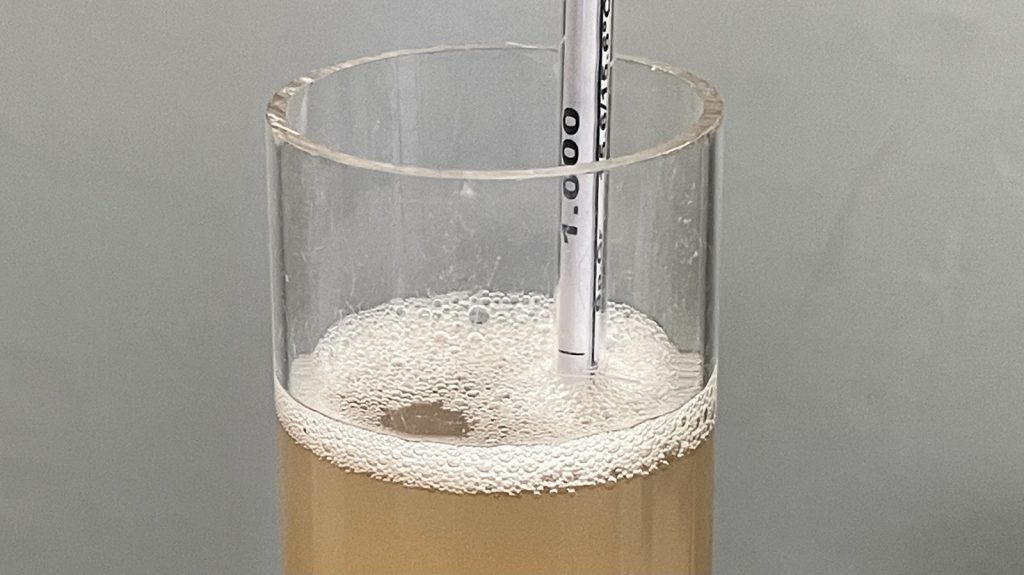
I replaced the blowoff tube with CO2 set to 2 psi and cold crashed the beer to 34°F/1°C for 3 days. When it came time to package, rather than using a sanitized and CO2 purged keg, I took an almost empty keg out of my kegerator and emptied it into my utility sink.
As soon as the keg was completely empty, I put the lid in place and proceeded with racking the beer into it.
The filled keg was placed in my kegerator and burst carbonated at 50 psi for 14 hours before I reduced the gas to serving pressure. After a week of cold conditioning in my keezer, it was ready to serve to tasters.
| RESULTS |
A total of 14 people of various levels of experience participated in this Short & Shoddy evaluation. Participants were informed of the specific beer style and provided the BJCP description prior to completing the survey. Tasters were then instructed to rate how hoppy, malty, and dry they perceived the beer to be on a 0-5 scale where a rating of 0 indicated “not at all” and 5 indicated “extremely.”
Tasters were provided a list of common hop, malt, and yeast characteristics then instructed to select from each the one they perceived as being most prominent in the beer.
Hop Characteristics
Malt Characteristics
Yeast Characteristics
Next, participants were asked to indicate whether or not they detected any off-flavors in the beer; those who did were provided a list of common off-flavors and instructed to select the one they perceived as being strongest. DMS, acetaldehyde, grassy, and estery were endorsed by one participant each.
Tasters were then asked to rate how well the beer represented the intended style, based on the provided BJCP description, on a 0-5 scale where 0 meant “not at all” and 5 meant “exactly.”
Finally, tasters were asked to rate how much they enjoyed the beer on a 0-5 scale where 0 indicated they hated it and 5 indicated they loved it.
My Impressions: There was nothing about this beer that was necessarily off, in fact it was about as refreshing as the original American Wheat Beer it was inspired by. However, I personally felt the blueberry character lacking quite a bit. This may be a matter of personal preference, but I was hoping for something with more oomph, and the blueberry in this beer was pretty faint.
| CONCLUSION |
When my twin broth and I were kids, our mom would bribe us with our favorite bubblegum, which was blueberry Bubblicious. I developed a taste early on for artificially pungent blueberry flavor and realized as an adult that actual blueberries are delicious as well. Aiming for a beer that somewhat resembled blueberry pie, I threw together an American Wheat Beer recipe that would not only be hit with a dose of blueberry puree, but brewed with a number of corners cut.
Based on the blind taster data, the most prominent characteristics of this Short & Shoddy Blueberry Wheat Ale was its dryness, which I suppose was likely influenced by the puree being highly fermentable. While a majority of tasters rated berry as being the most noticeable hop characteristics, given the relatively small amount of hops used, I have to believe most were picking up the actual berry flavor. Participants also noted the beer as having cracker/bread crust and caramel/sweet malt flavors with a largely clean fermentation profile.
In conversations with folks who’d completed the survey, which included a thorough description of this beer, I was surprised that quite a few said they detected a pleasant blueberry note. However, others were in my camp, claiming to have noticed some blueberry, but wishing there was more. Overall, it seemed most people felt this was an adequate representation of a Blueberry Wheat Ale and enjoyed their experience drinking it. I’d have to agree for the most part, though if I were to brew this again, I’d double the amount of blueberry.
If you have thoughts about this Short & Shoddy brew, please feel free to share it in the comments section below!
Support Brülosophy In Style!
All designs are available in various colors and sizes on Amazon!
Follow Brülosophy on:
FACEBOOK | TWITTER | INSTAGRAM
If you enjoy this stuff and feel compelled to support Brulosophy.com, please check out the Support page for details on how you can very easily do so. Thanks!


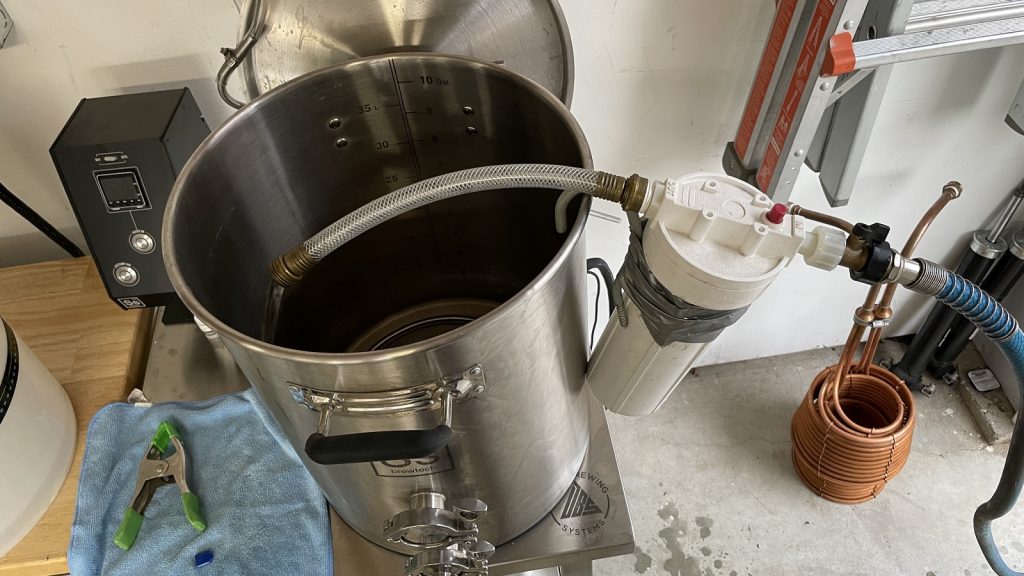
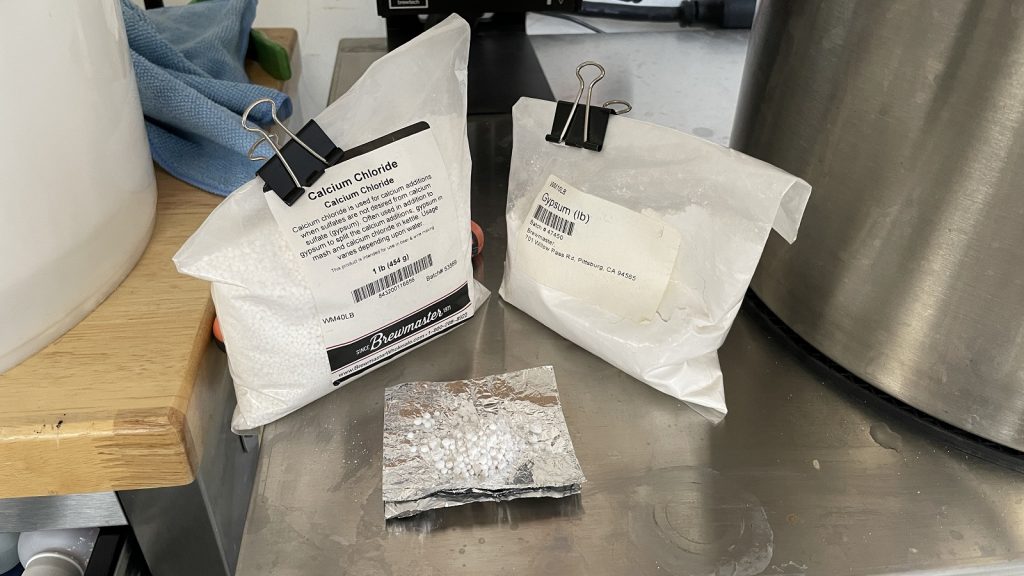
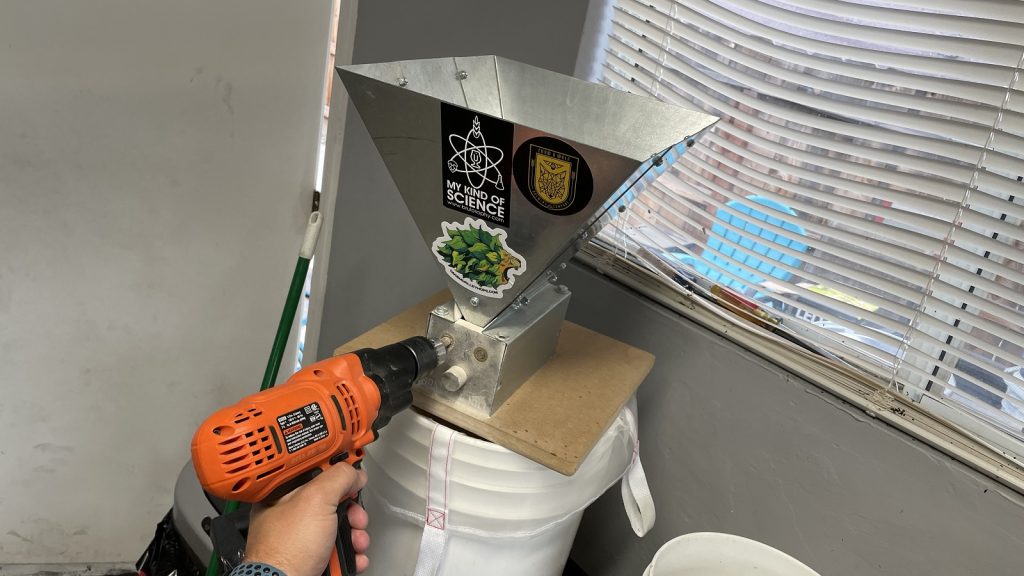
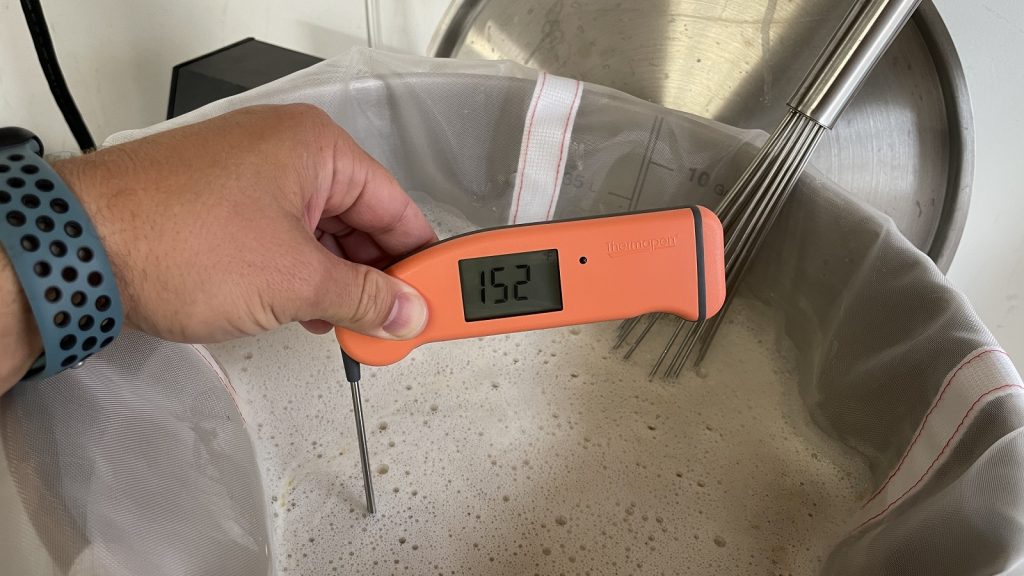
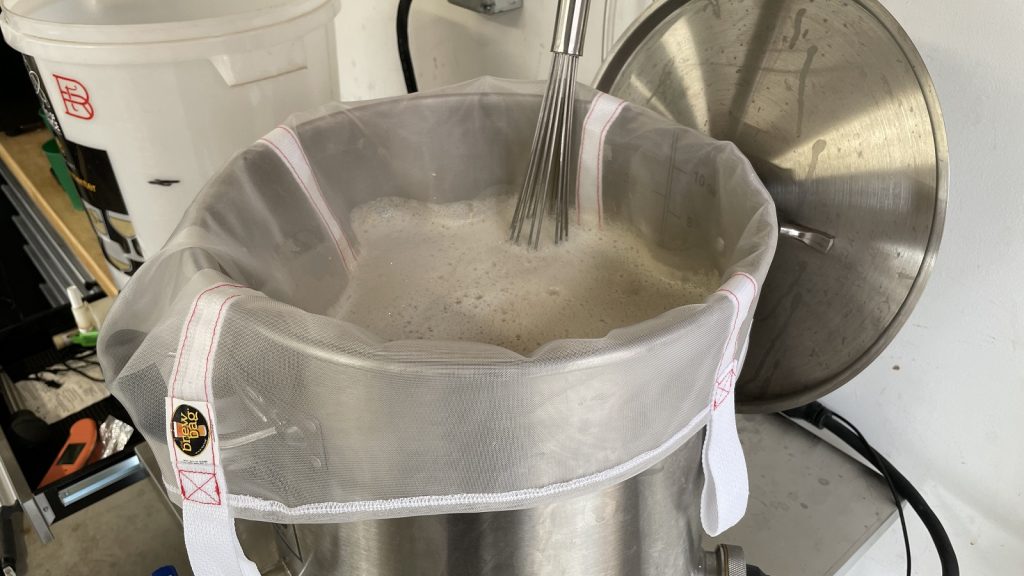
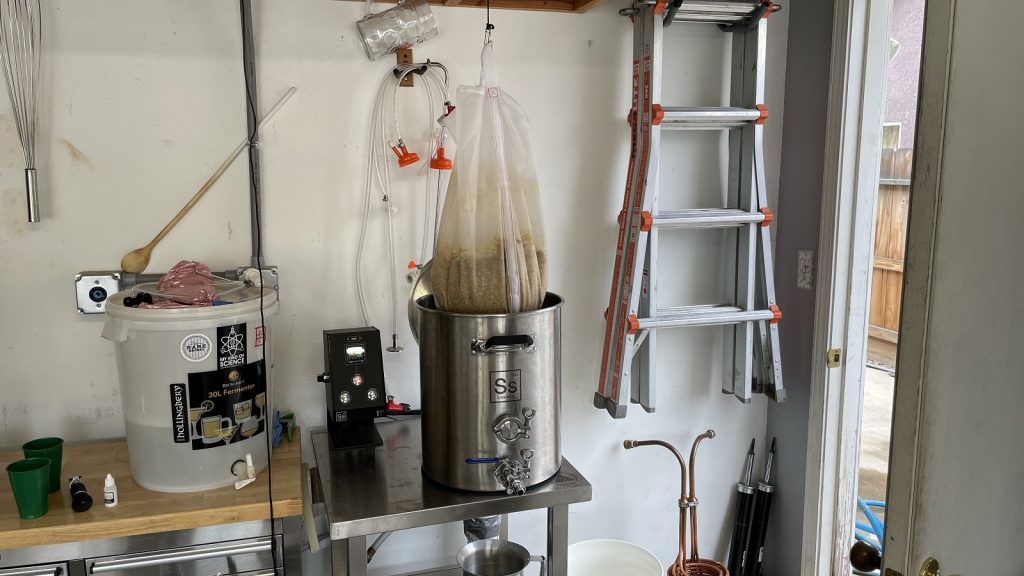
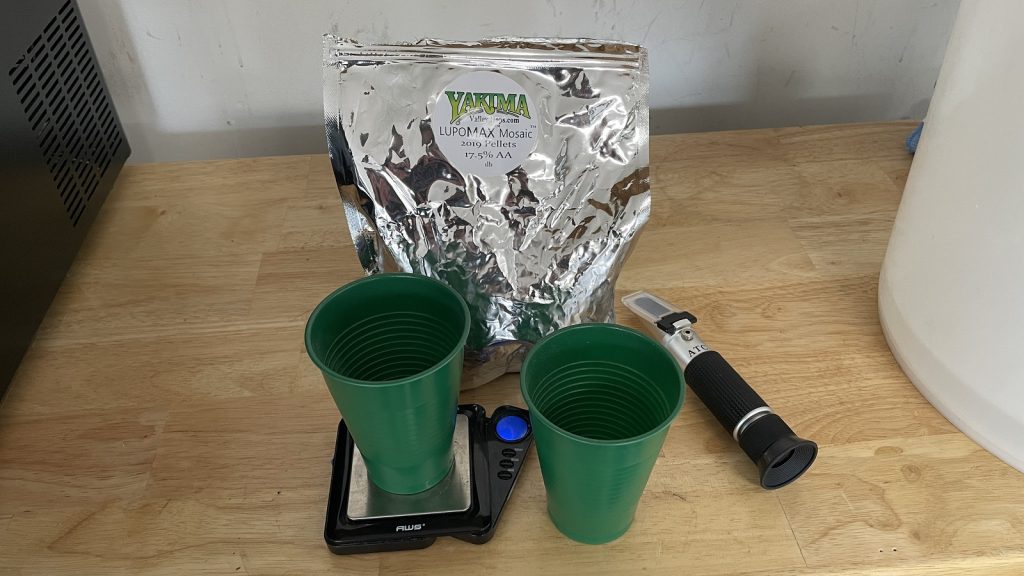

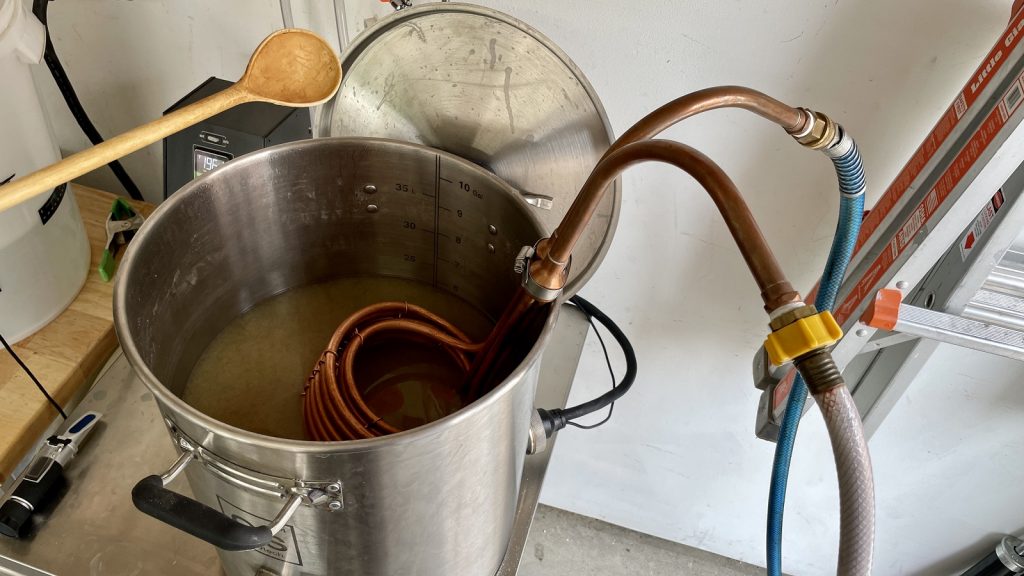
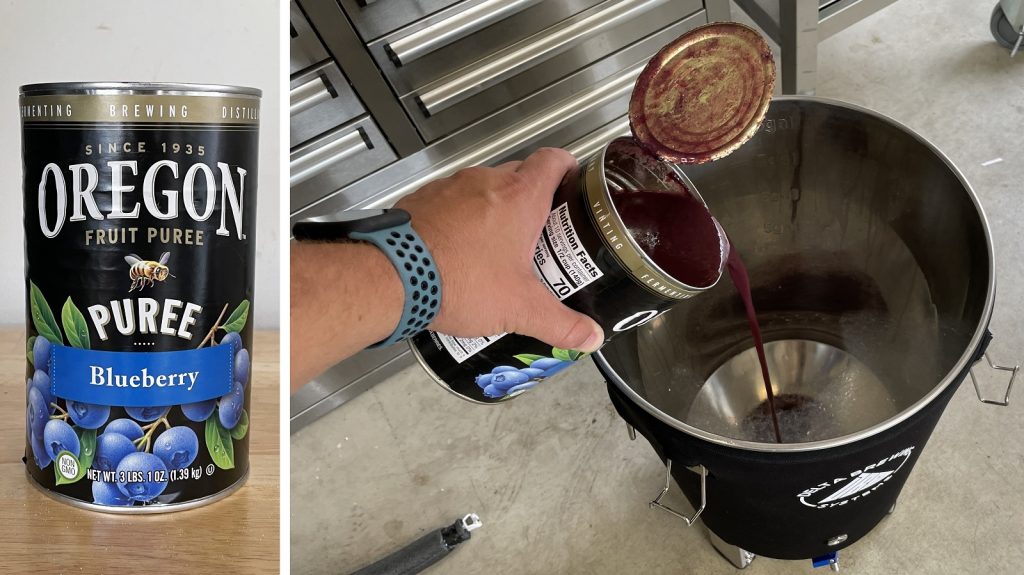
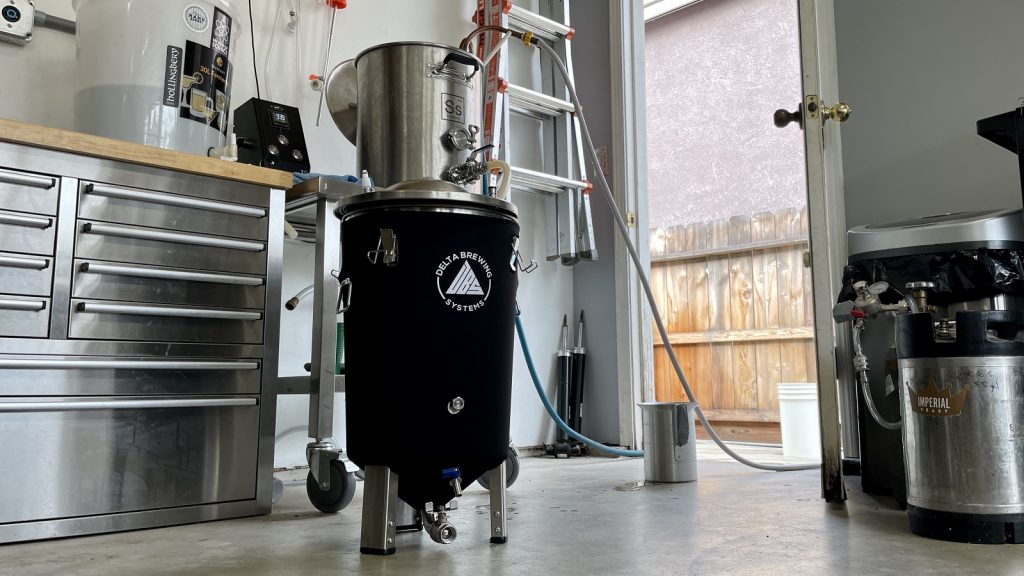
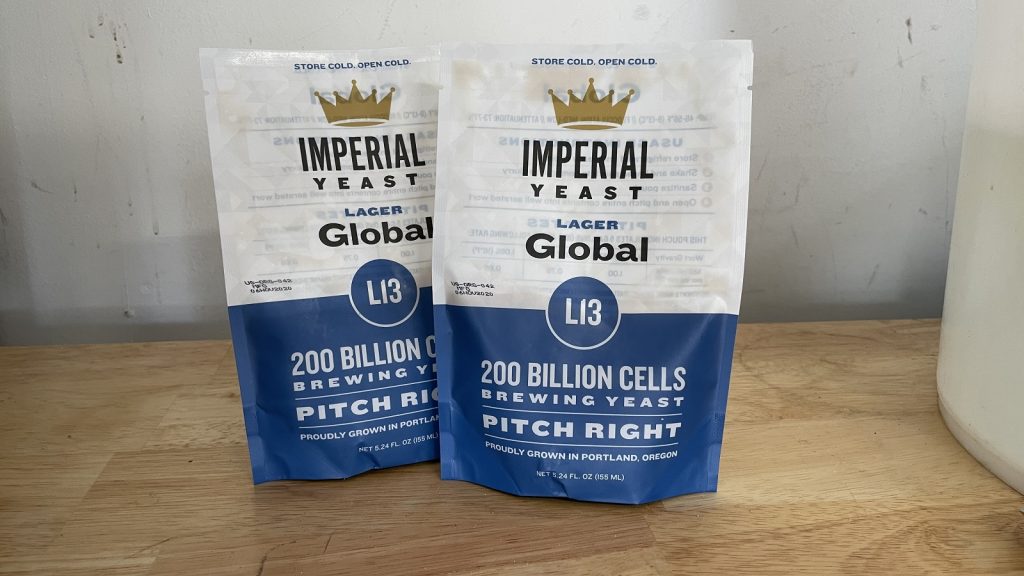

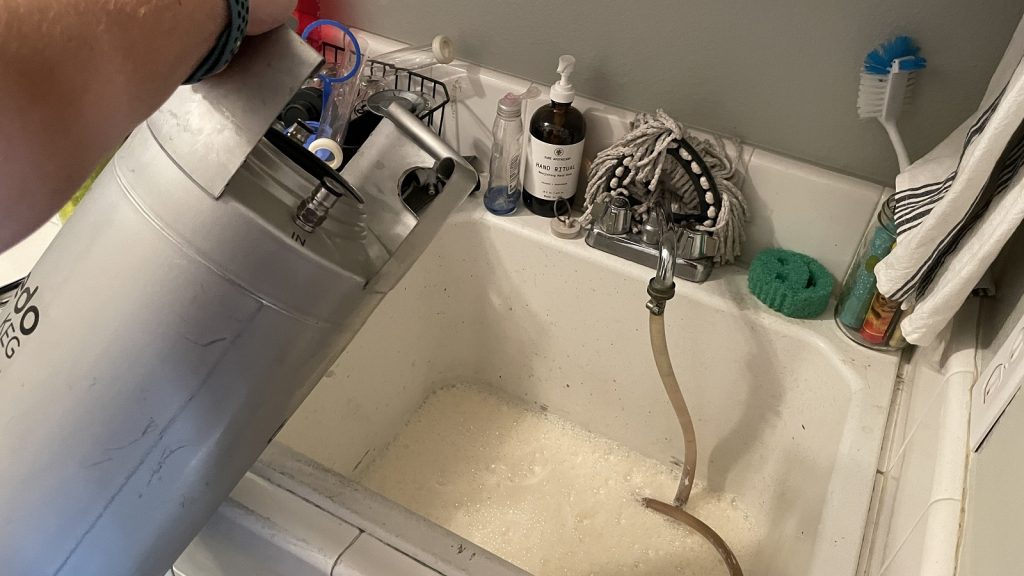
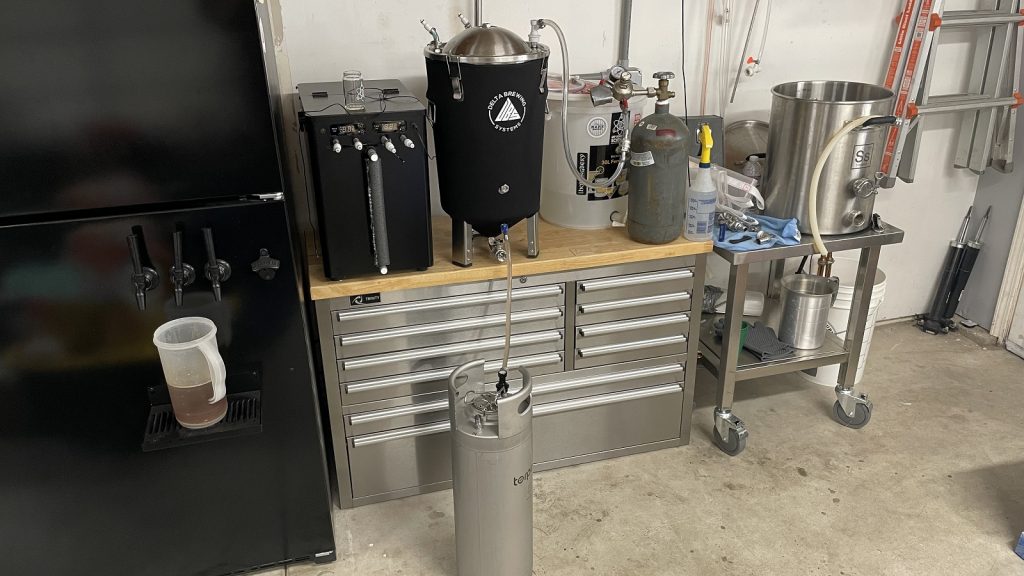
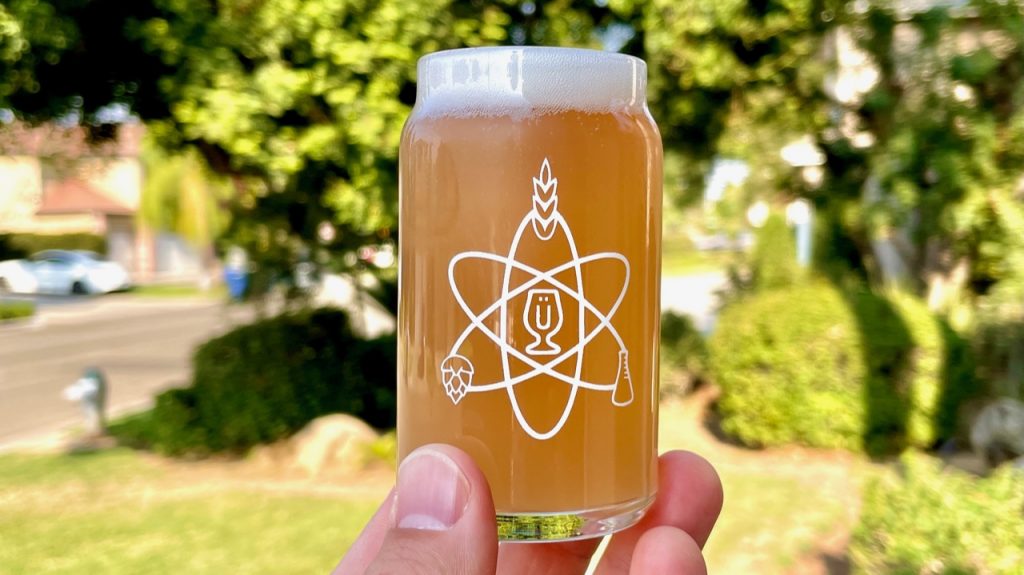
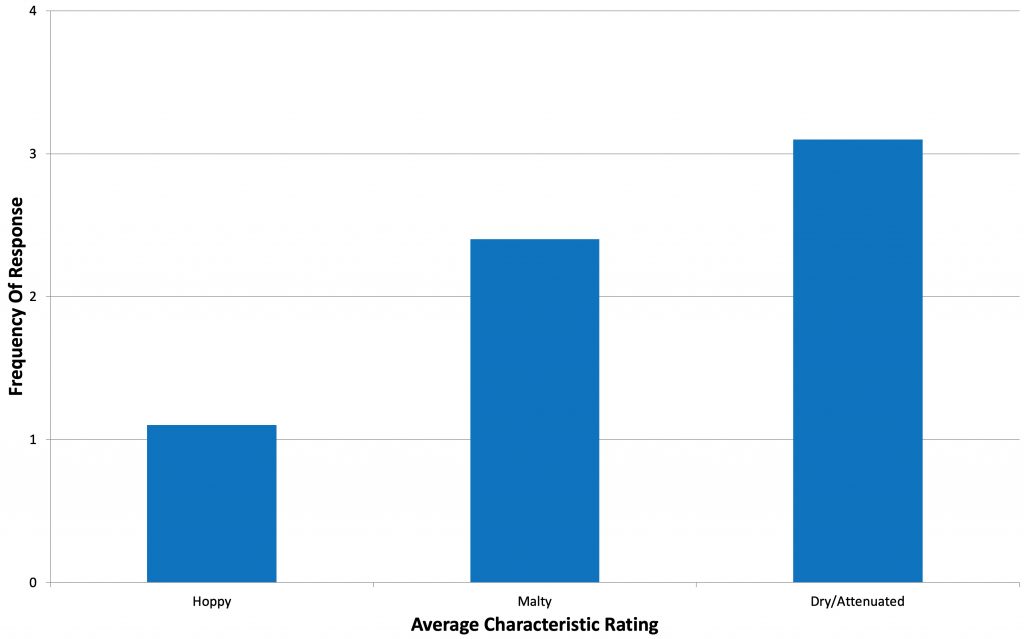
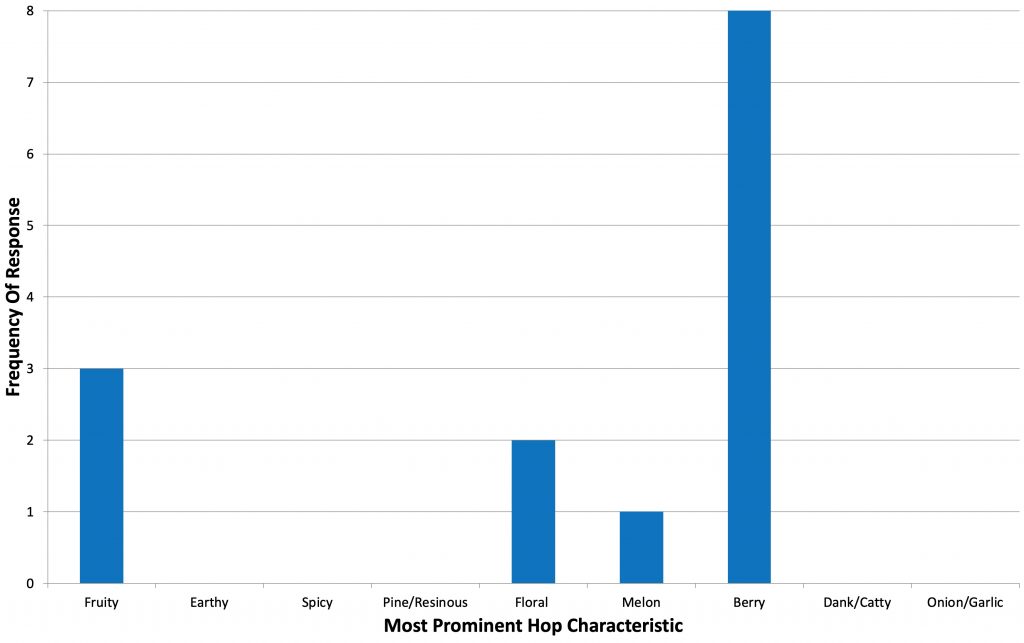
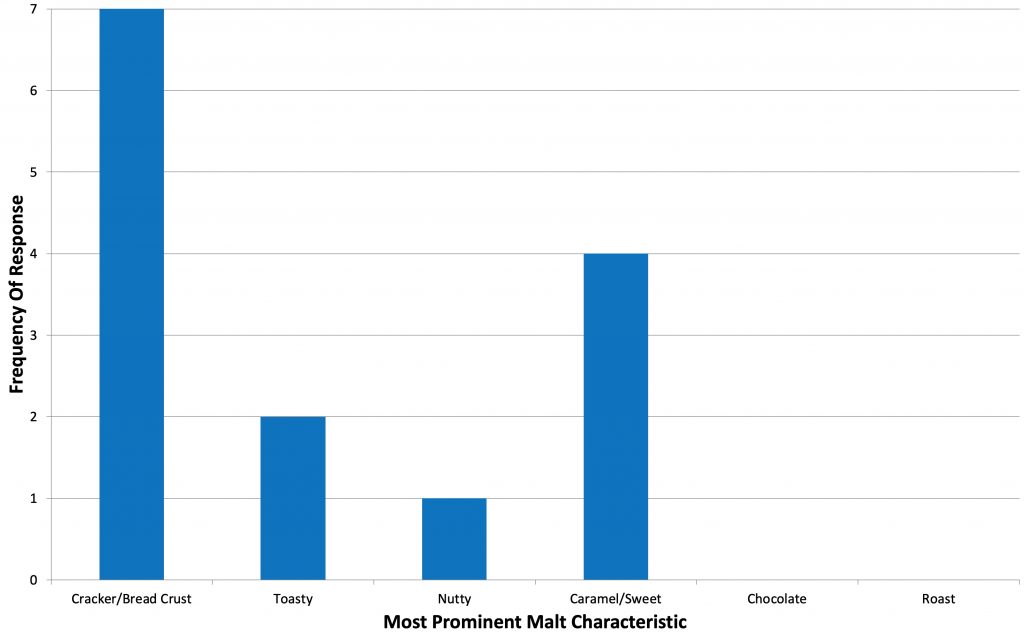
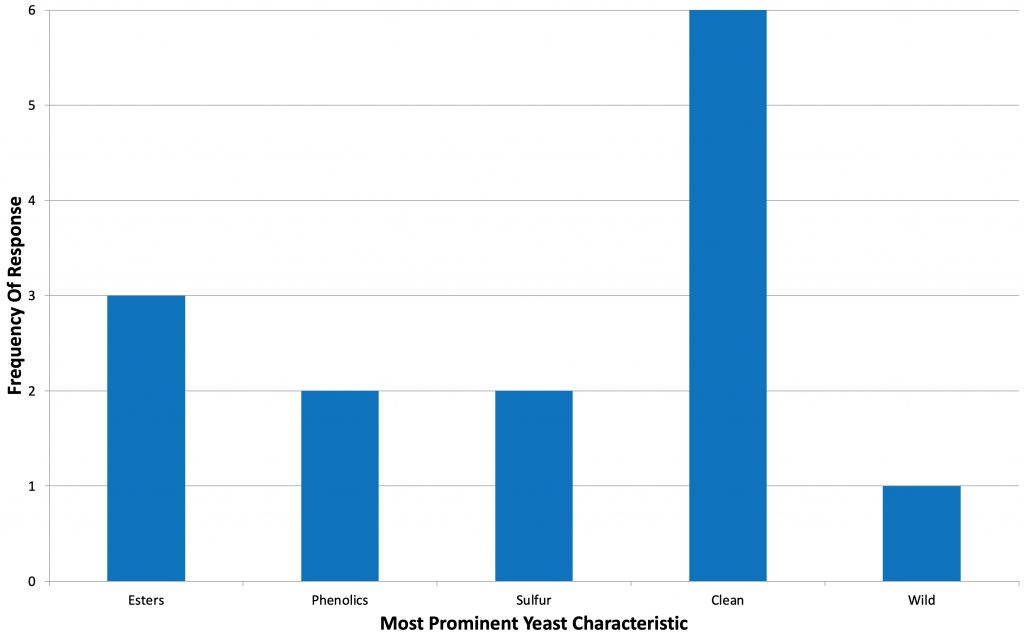
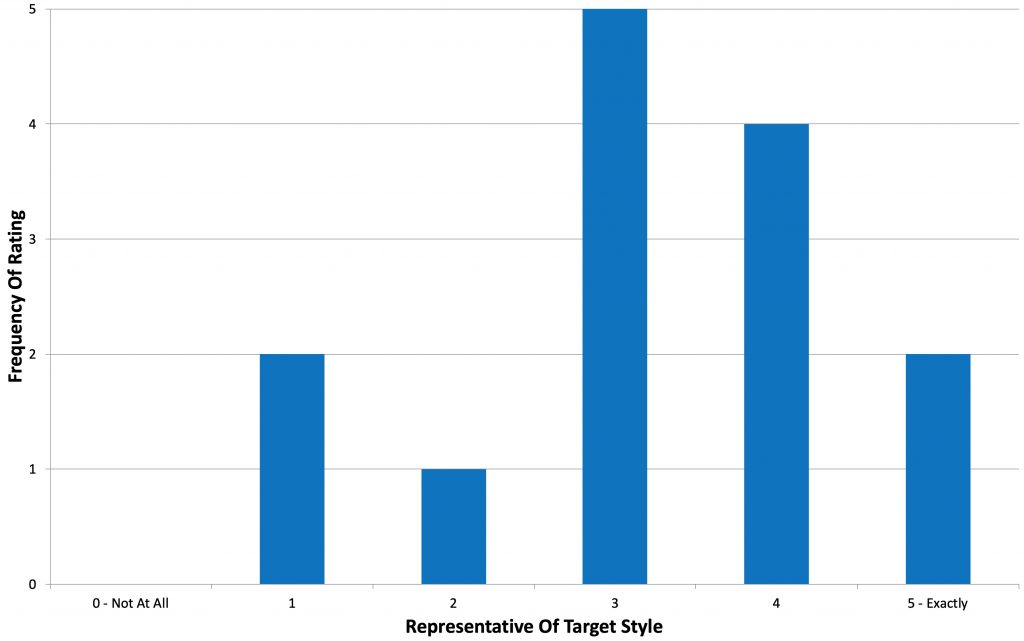
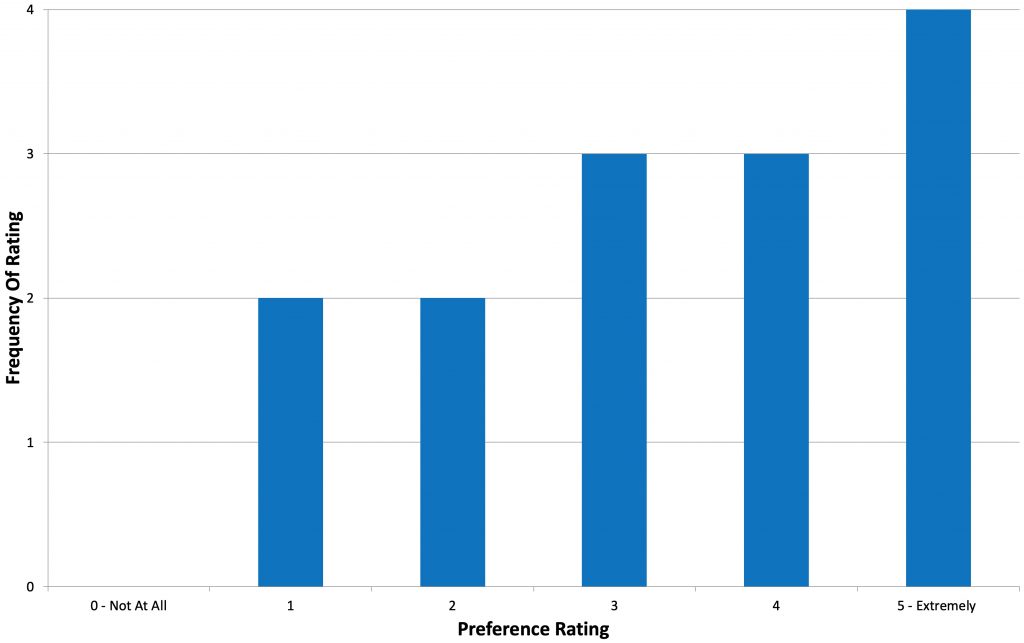











13 thoughts on “Short & Shoddy | Blueberry Wheat Ale”
Correct me if I’m wrong, but as far as I understand it, “brewhouse efficiency” includes losses from transferring to fv, etc., and what you’re measuring (og in kettle before transferring to fv) above is the “mash efficiency”.
Have you considered adding your fruit after fermentation for a more pure fruit flavor?
Yes, but I don’t like the idea of stabilizing the fermented beer then adding a fermentable sugar (fruit)… which is exactly what I do for cider. Haha.
I’ve always added the fruit after ferment has slowed around day 4.Which is the way
I’ve always done it, so I have nothing to compare to. Would that have helped retain more flavor?
I prefer adding stabilized fruit or adjuncts of any type after fermentation but there are many ways to make delicious homebrew 🙂 One benefit of this approach is to set some of the fermented base aside then share the base + the one with adjuncts. Interestingly, chefs are often most interested in the base.
It’s usually considered to be advantageous to add adjuncts when you’re still about 10 gravity points above target FG, that way any oxygen introduced by opening the FV will be quickly displaced by CO2 from the still active fermentation.
Just today I also read the interesting alternative suggestion in another homebrewers group of adding some dextrose in boiled(sterilized) water when adding adjuncts or even dry hops after fermentation, to restart a little fementation after opening the FV to create a new CO2 blanket to displace introduced O2. sounds like a good idea to me…
how often do you rely on the keg staying sanitized/racking new beer on top of old dregs
I can say with 100% confidence: once. Because this was the first time I’ve ever done it. Surprisingly, it seemed to work just fine. I pulled a pint last night while finishing the article and it tasted exactly the same I recall from a couple weeks ago.
Unrelated to recipe, but how do you keep the bag off the heating element? I was just looking at doing the same thing. SS electric pot/controller and a Brew in the Bag.
No need with the Ss controller.
I found your review shortly after posting. Thanks!
I brewed a non short and shoddy of this a couple months ago, with the addition of kettle souring. I added the blueberries after fermentation started to slow down. It turned the beer this beautiful pinkish/purple color. I was worried after it completed the blueberry flavor would be gone. After conditioning for a few weeks it actually came back and was rather delicious.
I find that blueberries are one of those fruits that are hard to capture the flavor of during fermentation. At best you can get a decent blueberry aroma, but the flavor doesn’t cross quite as well. I think you need a bit of acidity and/or sweetness to get “complete the picture” for the blueberry flavor. A dry wheat beer tends to lack in both. Something like a tart saison or sour will get you closer.
If you have some of this around still, try adding a bit of acid to a sample and see if that intensifies the blueberry.